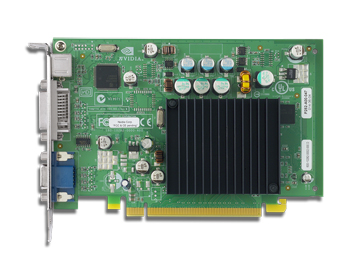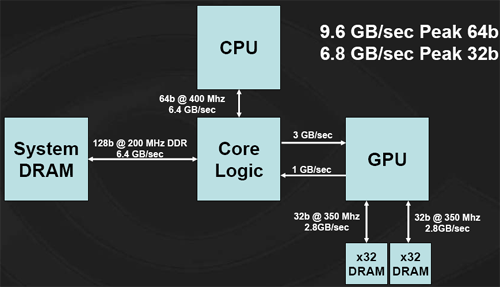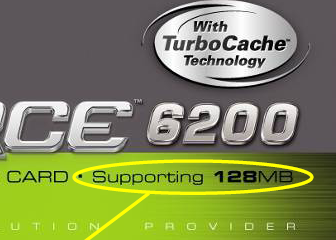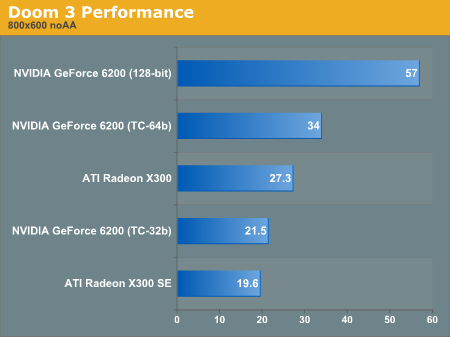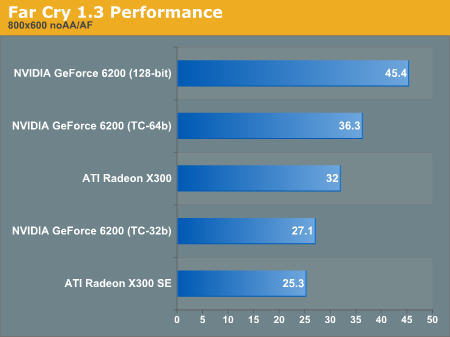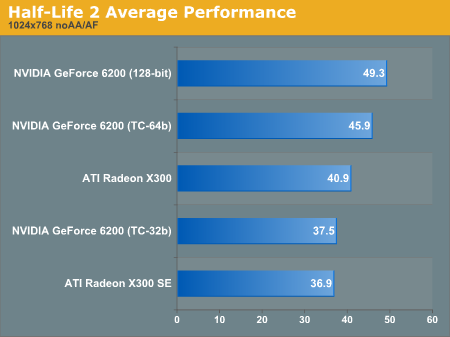Zar0n
Power Member
Geforce 6200TC

Quando a ATI ( Hypermemory )e a Nvidia (turbo cache ) apresentaram tecnologias semelhantes para diminuir ou mesmo eliminar a memoria das gráficas utilizando em vez disso a memoria RAM pareceu-me logo uma óptima ideia.
Aparentemente só a largura de banda do PCI-E e o facto de ser simétrico bidirecional permitiu o seu uso viável.
Claro k nunca terá a mesma performance da memoria on-bord da gráfica, mas a perdas n são muito significativas para a gama de placas a k vão ser aplicadas.
Para gráficas Low / Mid end parece-me a melhor opção.
Já k o €€€ poupado na memoria / pcb ate pode ser gasto numa gráfica mais rápida.
Geforce 6200TC scores 2300 3Dm05
Picture as well, just as well
By Fuad Abazovic in Wien: terça-feira 14 dezembro 2004, 03:36
THE GEFORCE 6200TC will end up as quite a fast card, of course for its category. This card will end up at $79 and will have a 64 bit memory bus and a total of 32MB of RAM.
At these specs it will be able to score 2300 in 3Dmark05 - just a little slower score than the $99 X300 card which should perform at 2500+ 3Dmark05. Its real competitor, the X300SE, scores much slower in the 1800+ areea.
If you are wondering about the screenshot, this card actually dynamically addresses at least half of your system's memory. In this case, the card shows up that is has 256MB of memory even it has only 32MB of physical RAM on its PCB.
These cards will come in January and will definitely make ATI run for its money. ATI actually has an answer and it's called Hypermemory. It will be a very similar marchitecture and ATI will also have 32MB cards that will act as they have up to 256 MBs.
You can see some details about the card here. See?

Quando a ATI ( Hypermemory )e a Nvidia (turbo cache ) apresentaram tecnologias semelhantes para diminuir ou mesmo eliminar a memoria das gráficas utilizando em vez disso a memoria RAM pareceu-me logo uma óptima ideia.
Aparentemente só a largura de banda do PCI-E e o facto de ser simétrico bidirecional permitiu o seu uso viável.
Claro k nunca terá a mesma performance da memoria on-bord da gráfica, mas a perdas n são muito significativas para a gama de placas a k vão ser aplicadas.
Para gráficas Low / Mid end parece-me a melhor opção.
Já k o €€€ poupado na memoria / pcb ate pode ser gasto numa gráfica mais rápida.


